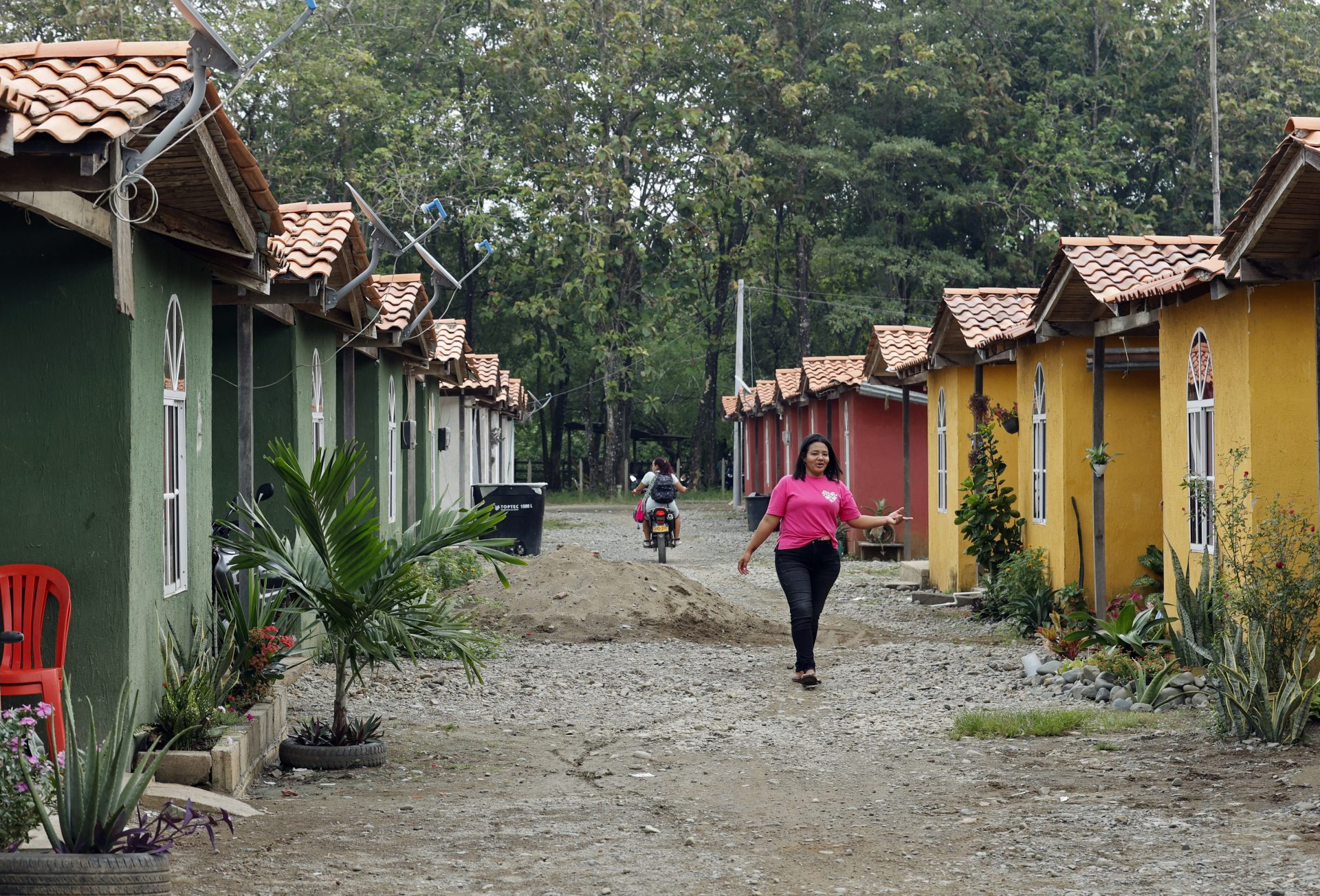By Irene Escudero and Esneyder Negrete |
Santa María La Nueva (Colombia) (BLAZETRENDS).- The neighborhood is popularly known as “Las casitas” but some neighbors call it “Blessing of God”, although rather the “blessing” was granted by the Clan del Golfo, the group that controls and commands this corner of northwestern Colombia, almost completely disconnected from the country and bordering Panama.
There are 40 houses, about 15 square meters, painted green, white, red and yellow, the colors of the Gaitanista Self-Defense Forces of Colombia (AGC), the other name by which the largest criminal gang in the country is known and which in this area of the Gulf of Urabá has filled a void that no government has filled.
There almost everything is deficient: from electricity to education, as well as access roads or health.
That is why the Clan del Golfo puts teachers in rural schools where they are lacking; builds roads so that in an area that at some point became the main producer of corn, agricultural products -and coca- can go to the local markets, and also, in the face of the “overcrowding” of those who returned to their land and lived homeless, they built houses.
Obviously they also enforce law and order. They dispense justice, settle conflicts between neighbors and sometimes apply punishments that range from a verbal warning to the order to sweep a community park. Although they intervene less and less, according to the residents, because they have allowed them to organize conciliation committees without the mediation of the AGC.
The Clan del Golfo fills a void
“I am one of the beneficiaries of these houses that he gave away…”, Yira Berbel tells BLAZETRENDS without daring to finish the sentence. There they call them “The organization”, “The company” or sometimes “they” or “those in charge”. Always whispering, despite the fact that the acceptance that the AGC have there is very high.
“One is not going to expect 40 houses like this for a community from the Government”, so, “if you have a need, do not start asking questions”, repeats this young mother of two children.
“Do not look at the fang of a gift horse,” he says.
The day of the delivery of the concrete houses, in 2021, was a party. The neighbors remember the big raffle, the “sorteíto”, that they organized, how they took papers out of a bag with the house number, and then the families set out to find their new home.
The only requirement they put, they say, was that the houses be inhabited. There were no threats nor have they asked for anything in return. They only wanted to give houses to those who had nowhere to live: “The people here are very grateful to ‘The Organization’ because this used to be a field.”
“Tranquility” in “Las casitas”
The neighbors, many displaced by violence years ago, speak of the “tranquility” of this area, of the security that nothing will happen to their children. A paradox knowing that they live in a so-called “red zone” controlled by this group, which is dedicated above all to drug trafficking and illegal mining.
The AGC was born near there, after a meeting of ex-paramilitaries from the extinct United Self-Defense Forces of Colombia (AUC) who decided to rearm.
Says Ana Lucila Mestra, president of the Asocomunal of this municipality, Unguía, that in the end the group is made up of the children, parents, spouses of the families that experience state abandonment, which is made up of “any person who, due to lack of opportunities to In order to earn a living for his family, he decides to take up a weapon.”
“It is sad that these illegal structures, as the State calls them, have to be the ones that come to our territories to supply us with the need that the State should supply us by law. They are the ones who help us with road issues, with home improvement issues,” he told BLAZETRENDS.
Social investment and threats
There are scenes that are repeated in many parts of Chocó: A boat leans over an improvised pier for passengers to get off between two stilt houses where the initials of the AGC are more distinguishable than the sign that gives the town its name.
The same initials that can be read on facades, schools and banners in this area and that extend to many others in the Caribbean and Pacific.
However, while in Unguía the members of the AGC paint schools, in others they walk around with their rifles in hand spreading fear, inciting the population to hold marches to force the government to stop its operations against illegal mining, planting mines that make peasants cannot farm or even causing many young people to commit suicide rather than be recruited.
Many agree that in the land where they were born, investing in infrastructure and giving what the communities need has given them popularity, but in other places, especially where they do not have total control, they continue to use force, threats and even selective assassinations.
They also maintain an open war with the Army and other groups such as the ELN, and the noise of rifles and machine guns continue to keep the population awake.
“We are as communities in the middle of an absurd war that we don’t know about. The one who has his weapons knows how he is going to defend himself, but we, the victims; For us, the peasants, the only thing that defends us is words, and even more so when we try to knock on doors in the State and they do not provide us with security guarantees,” sums up the Afro-Colombian leader.
